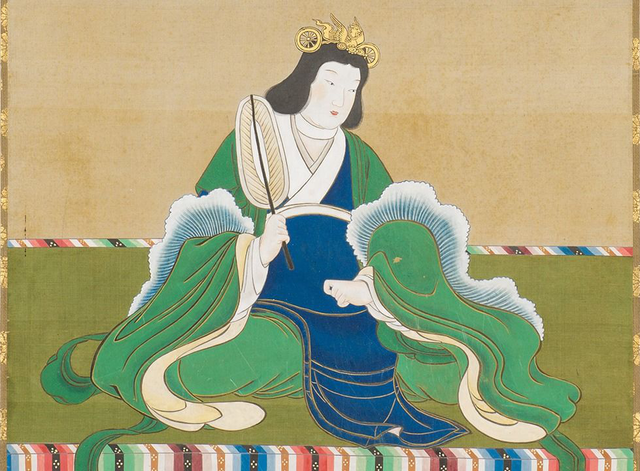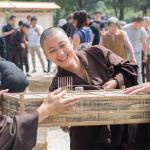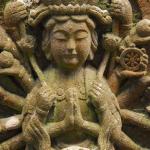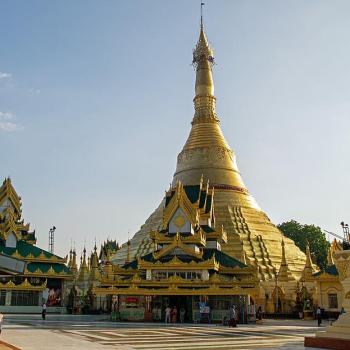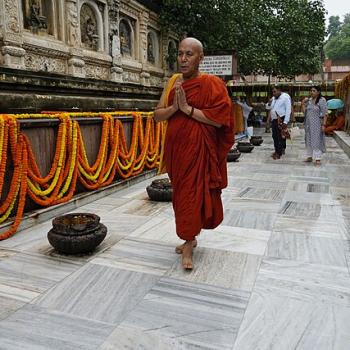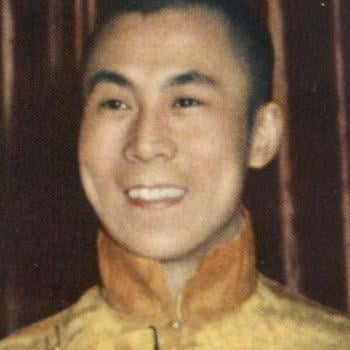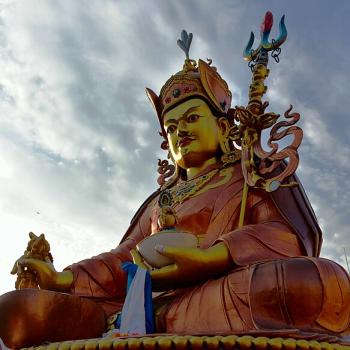The first Japanese Buddhist nuns were not welcome in Japan. It’s recorded that three Japanese women were the first people of Japan to receive any sort of Buddhist ordinations, as novice nuns, in the year 584. But Buddhism was a new and controversial religion in Japan. At least one powerful clan, the Mononobe, was against it. In 587, the Mononobe incited a mob to riot and destroy the nuns’ temple. The nuns were publicly defrocked and beaten. Somehow the three nuns were rescued and then shipped out of Japan for their own safety.
Buddhism had recently been introduced to Japan because a king of Korea needed military reinforcements. King Seong (r. 523–554) was a ruler of Baekje, a kingdom located on the southwest portion of the Korean Peninsula. In the mid-6th century Baekje was at war with two other Korean Peninsula kingdoms over disputed territory. In a move that smacks a bit of desperation, Seong reached out to the monarch of the land of Wa, across the eastern sea. This was Kinmei, recorded in history as the 29th emperor of Japan.
In about 552 an emissary from Seong arrived at Kinmei’s court. Among the gifts presented to Kinmei was a copper and gold statue of the Buddha and some Buddhist scriptures. And there was a letter from Seong to Kinmei recommending Buddhism. “This doctrine is among all doctrines the most excellent,” Seong said, “But it is hard to explain and hard to comprehend.” And then Seong asked for reinforcements.
This event is considered the formal introduction of Buddhism to Japan, although it’s known that some Japanese had heard of Buddhism before this. By all accounts Kinmei was enchanted with the gifts and received them with great solemnity. But he did not respond to Seong’s request for help. Seong was killed in battle in 554.
The First Japanese Buddhist Nuns
At the time, the land of Wa was being pulled in many directions by its powerful clans. One of these was the Soga clan. The Soga had contacts in Korea and China, and they were prepared to accept Buddhism. Another was the Mononobe clan, who feared their indigenous gods would be angered by veneration of a foreign image. Unsure of what to do, Kinmei gave the Buddha statue to the Soga. The Soga could worship it, and then all would see how the indigenous gods would react. Unfortunately, a plague broke out. Kinmei had the statue tossed into a canal. Buddhism was officially banned.
The Soga clan weren’t ready to give up. They continued to promote Buddhism. And this takes us to the novice ordination of the three nuns. In 584 Soga aristocrats sponsored this ordination of three very young women — one may have been only eleven years old — who were given the ordination names Zenshin, Zenzo, and Kenzen. The ordination was conducted by an imported Korean monk. The three novice nuns were installed in a temple built by the Soga. And then, in 587, the Mononobe attacked and destroyed the temple and publicly defrocked the young nuns.
The nuns were shipped to Baekje, where they were able to train and study under fully ordained nuns. While they were away the Soga attacked and crushed the Mononobe in battle. And then the three Japanese nuns returned to Japan in 590 to teach and ordain more nuns. I’ve seen some quibbling that in such a short time the three couldn’t possibly have received full ordination. But in the decades that followed more Japanese women were able to receive full nuns’ ordinations, usually with the help of Korean and sometimes Chinese nuns.
The Empress Suiko
The clan rivalry over Buddhism was resolved in 592. That year a granddaughter of Soga no Iname, the head of the Soga clan, was enthroned as the Empress Suiko (r. 592–628). the 33rd monarch of Japan. Her nephew, Prince Shotoku, served as her regent. Both Suiko and Shotoku are remembered as devout Buddhists who encouraged the spread of Buddhism in Japan.
The rivalry between Buddhism and indigenous beliefs —loosely, what today is called Shinto—would be resolved in what much later came to be called the shinbutsu shugo, or “unity of spirits and buddhas.” Buddhism was adapted into indigenous beliefs, and indigenous beliefs—such as belief in spirits called kami—came to be accommodated by Japanese Buddhism. It was quite normal for Shinto and Buddhism to share temples and shrines. However, in 1868 the government of Japan adopted a policy called shinbutsu bunri, which separated Buddhism and Shinto. That’s a topic for another post.
As for the discarded gold and bronze statue of the Buddha, it’s said someone scooped it out of the canal. It is now housed at Zenko-ji, a temple in Nagano, although no one is allowed to see it. Read more about the story of Buddhism in Japan in my book, The Circle of the Way: A Concise History of Zen from the Buddha to the Modern World, published by Shambhala.
